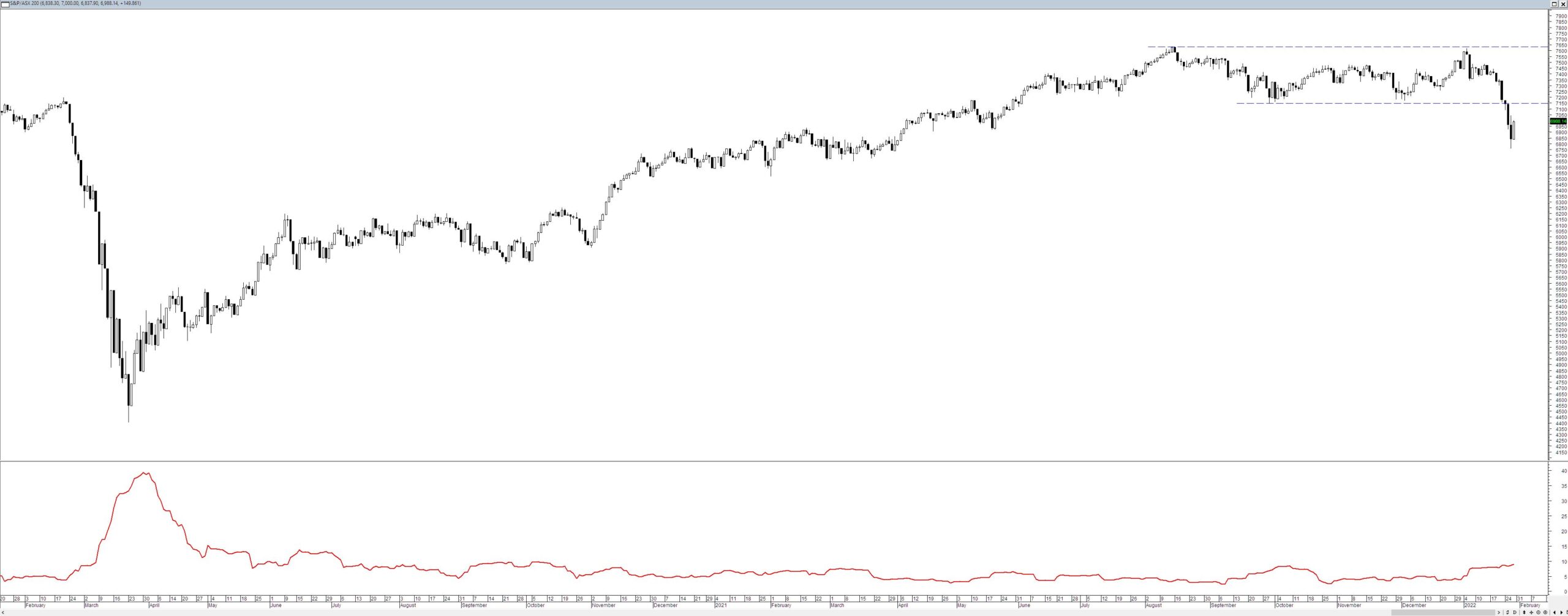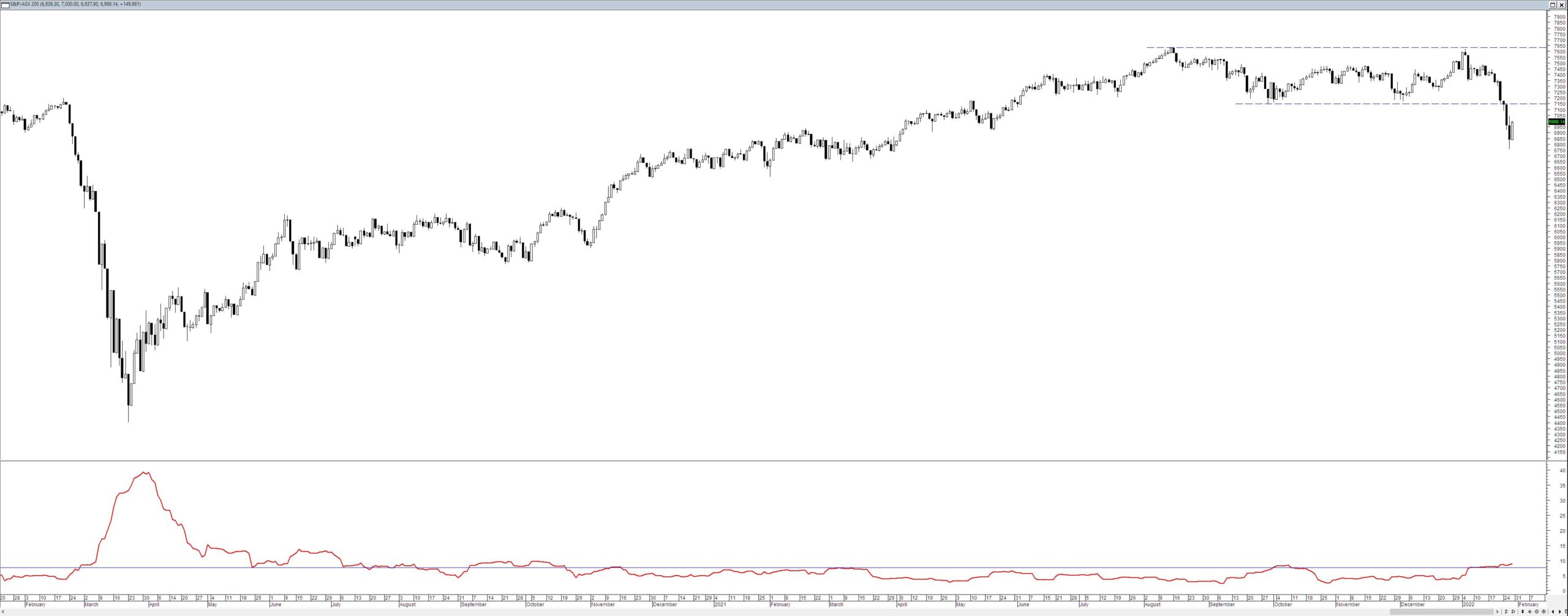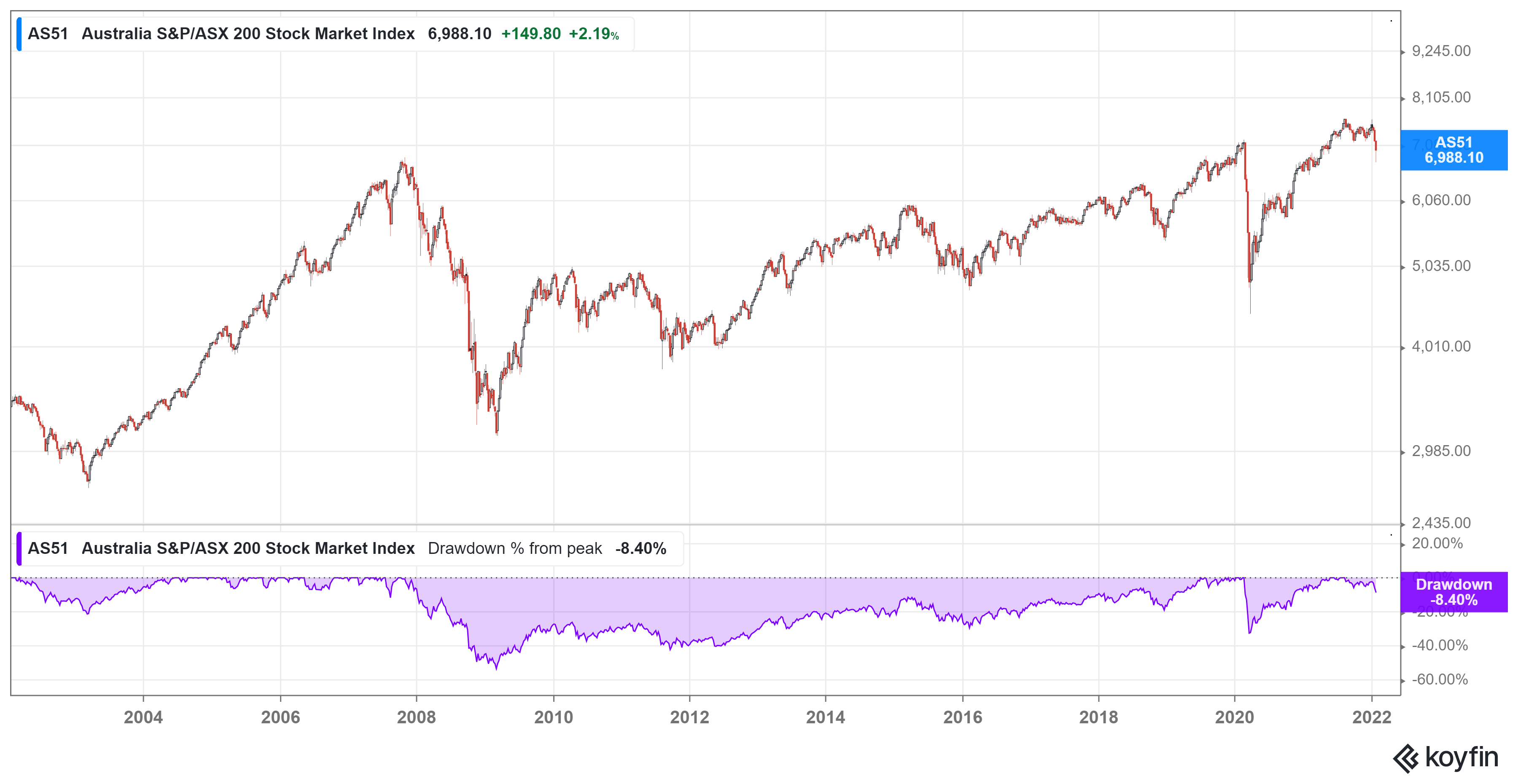Whenever markets have some form of correction traders’ and commentators’ thoughts immediately turn to volatility and what impact it may have on investing returns. However, in their commentary and opinion pieces, they fail to answer a simple question. Is the market more volatile now?
For example, I recently received an article from Sharesight titled – Experts weigh in on market volatility for 2022. It immediately presumes that there has been some form of change in volatility and that this should in some way influence the decision-making of traders/investors. As an example –
Andy Rogers, Director of Stockbroking, CMC Markets Invest: “Volatility has been a powerful trend impacting the markets since COVID-19 took hold and is set to continue in 2022. With that in mind, one tip for new investors is to review the strategies they can put in place that will mitigate risk and help to minimise the impact volatility has on their portfolio. An example of this is the Dollar-Cost Averaging (DCA) method. DCA is an investment strategy in which an investor divides up the total amount to be invested across periodic purchases of a target asset, the aim being to reduce the impact of volatility on the overall purchase.
The problem is that the initial question as to has there been any long-term change in volatility has not been addressed. Fortunately, it is an easy question to answer. The chart below is of the S&P/ASX 200 with its 30-day historical volatility plotted in red.
 A quick scan of the chart shows that there was a bump in volatility in the first quarter of 2020 as COVID broke locally. However, since then the level of volatility has settled down to a fairly narrow range. But there is a caveat – the human eye is poor at picking out nuance so I replotted the chart this time with the average volatility shown in blue.
A quick scan of the chart shows that there was a bump in volatility in the first quarter of 2020 as COVID broke locally. However, since then the level of volatility has settled down to a fairly narrow range. But there is a caveat – the human eye is poor at picking out nuance so I replotted the chart this time with the average volatility shown in blue.

A quick observation shows us that the local market has spent most of its time since the arrival of COVID with below average volatility and even given the falls last week the market is only just above its longer-term historical daily volatility.
It is worth remembering what volatility measures – it is simply how far has price moved and in what time frame has it done so. It is simply how much, how quickly. It is this time component that confuses people. Volatility is always measured against the past – it is not simply what happened today that matters, it is what has happened today relative to other days. For example just because the market had a series of down days last week does not mean there has been a dramatic spike in volatility. When most people speak of volatility what they are really referring to is trend and it is here there is a major point of confusion – volatility is not trend and vice versa. The two are very distinct elements of price.
Prices moving down does not mean the market is more volatile – it simply means that prices have changed trend.
There is one further point I want to touch on and that is the notion of what is normal within a market.
Mark LaMonica, Individual Investor, Product Manager and Co-host of Morningstar Australia’s Investing Compass podcast: “What’s been happening is not normal. There’s a lot of confidence in a market that, according to many traditional indicators, resembles the peaks that preceded some of the worst crashes in history. The biggest key to being a successful investor is to stick to it over the long-term so investors should temper their expectations going forward.
As I have said before – markets go up and markets go down. Drawdown is a natural feature of investing.

There is no such thing as abnormal market behaviour since all things that occur within a market have occurred before and are therefore simply part of the behavioural reportoire of markets. Deal with it or don’t play.




